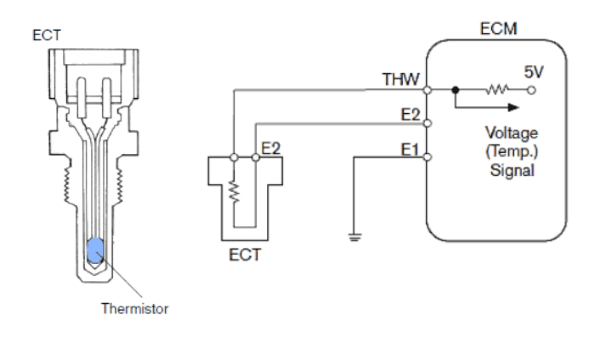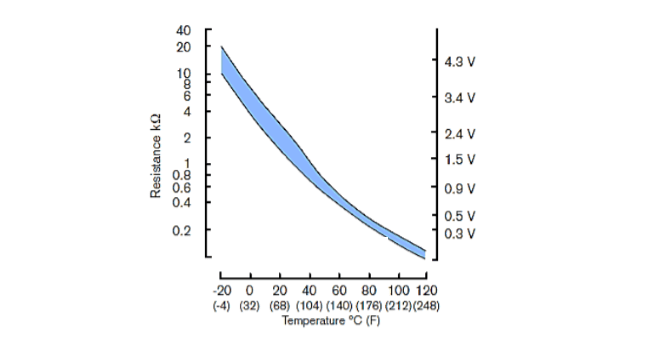What does engine coolant temperature sensor do?
The Engine Water Temperature Sensor, also often known as the Engine Coolant Temperature sensor, is a component of the Electronic Fuel Injection (EFI) system included in the sensor class.
The Engine Coolant Temperature sensor has a function to detect the temperature of the engine cooling water. All temperature changes in the engine cooling water are detected by the Engine Coolant Temperature sensor and then used as input data for the Engine Control Module (ECM).
The location of the Engine Coolant Temperature sensor is generally installed in the engine block, which is directly related to the waterline of the engine cooling system. On some cars, someplace the Engine Coolant Temperature sensor in the thermostat housing.
The Engine Coolant Temperature sensor uses an electronic component in the form of an NTC (Negative Temperature Coefficient) thermistor wrapped in a metal layer to increase its sensitivity. Take a look at the sample image of the water temperature sensor below.
The Engine Coolant Temperature sensor works by changing the input voltage sent by the ECM. The input voltage changes because of a change in the NTC thermistor's resistance value that is caused by changes in the temperature of the cooling water.
Pay attention to the example of the electrical schematic drawing of the water temperature sensor connected to the Engine Control Module below.
The water temperature sensor is connected to the ECM via two wires connected to terminals THW and E2. The THW terminal is used as a voltage source and input for the water temperature sensor, whose value is 5 Volts. At the same time, the E2 terminal use as the sensor output and is used as data input for the ECM.
Yes, when there is a change in the cooling water temperature, the resistance value in this thermistor will also change. When the cooling water temperature rises, the resistance value of this water temperature sensor will decrease. And vice versa, when the cooling water temperature drops, the resistance value on this sensor will increase.
Read also:Changes in the resistance value of this thermistor will affect the value of the output voltage coming out of the sensor. The graph will show the relationship between the changes that occur between the cooling water temperature, the value of the resistance on the thermistor, and the sensor output voltage.
As we can see in the graph above, when the cooling water temperature increases, the resistance value on the sensor and the output voltage will decrease, and vice versa when the cooling water temperature drops, the resistance value on the sensor and the output voltage will increase.
Changes in the output voltage coming out of the water temperature sensor will be used by the ECM as input data for the engine cooling water temperature. And along with data from other sensors, the ECM will use it as a basis for determining fuel injection time, ignition timing, and several corrections so that engine performance can remain optimal.


